How to photograph motorsports
Long, or short exposure time?
When you photograph motorsports, your goal usually is to capture the action. So I bet your first thought is: I need to freeze the action by choosing a very fast shutter speed.
But among specialized photographers that’s a way to tell beginners from the pros. Freezing the motion is rather easy, but would not capture the speed.
That is particularly true for paved tracks. On dirt tracks where freezing flying dust is just too great to miss, that’s a totally different story.
So what you rather want is a bit of motion blur.
Focus comes first!
Before we talk about shutter speeds, let’s talk about focus.
Having your subject in focus is one of the most important things in photography in general, but particularly if you want to understand how to photograph motorsports.
Tips for slow focusing cameras
You probably know that there are cameras that are faster focusing than others and you may have a camera that is not all that great when it comes to focus speed.
The good news is: there are workarounds:
- place yourself at those parts of the track where the speed isn’t all that high.
- photograph your subject from the side, rather than having it drive towards you (see the first image below).
- Using slower shutter speeds that we will discuss soon will give you enough light to open the aperture. And that will give you a much bigger depth of focus, making it much easier to get sharp images. Don’t worry though – if you like blurred backgrounds, there is still a way to get it despite the high f-number.
- If nothing helps: set your camera to manual focus and focus on the spot where you want the subject to be when you press the shutter. With the high f-number mentioned above, you should easily get a few great shots.
How to set your focus for motorsports photography
Continuous Autofocus (AF-C)
Unless you are photographing motorsport in manual focus as I described above, you have to use continuous autofocus. In single autofocus, the camera will focus once, and then keep the focus until you press the shutter. Given the high speeds in motosport, in that time the subject will already have moved a meter or more, resulting in an out of focus shot.
Focus Tracking
What helps a lot are cameras that offer focus tracking. Newer, particularly mirrorless cameras with built-in AI algorithms are amazing at that. You can set the focus spot on the helmet, long before the car/motorbike reaches the curve or point where you want to press the shutter. The camera will then track the helmet across your frame wherever it goes, wich will make following the subject and compositioning much easier.

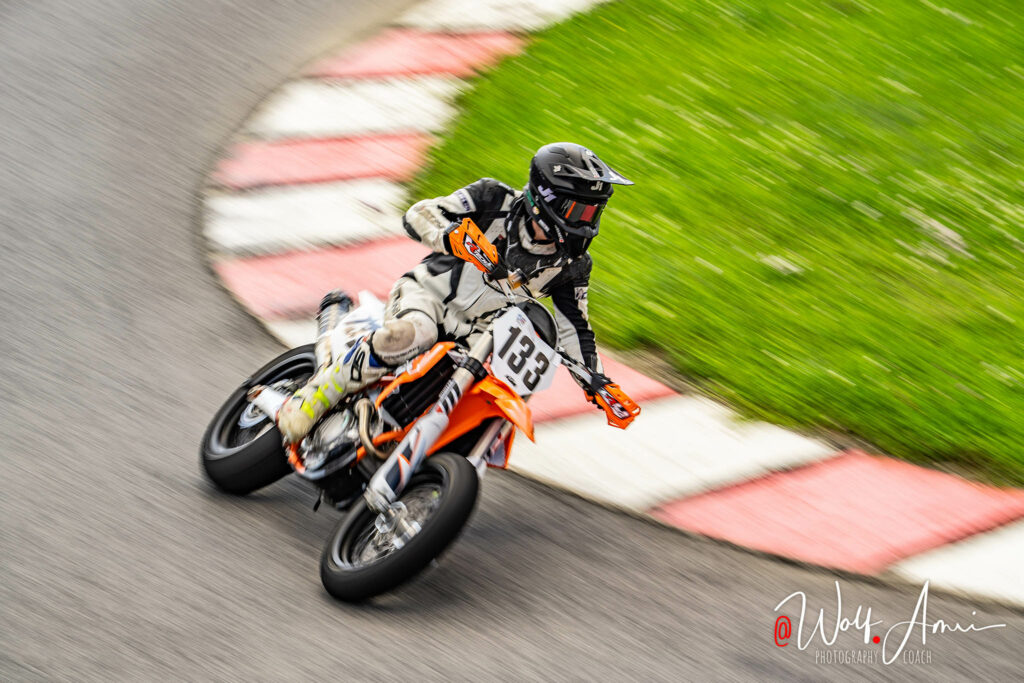
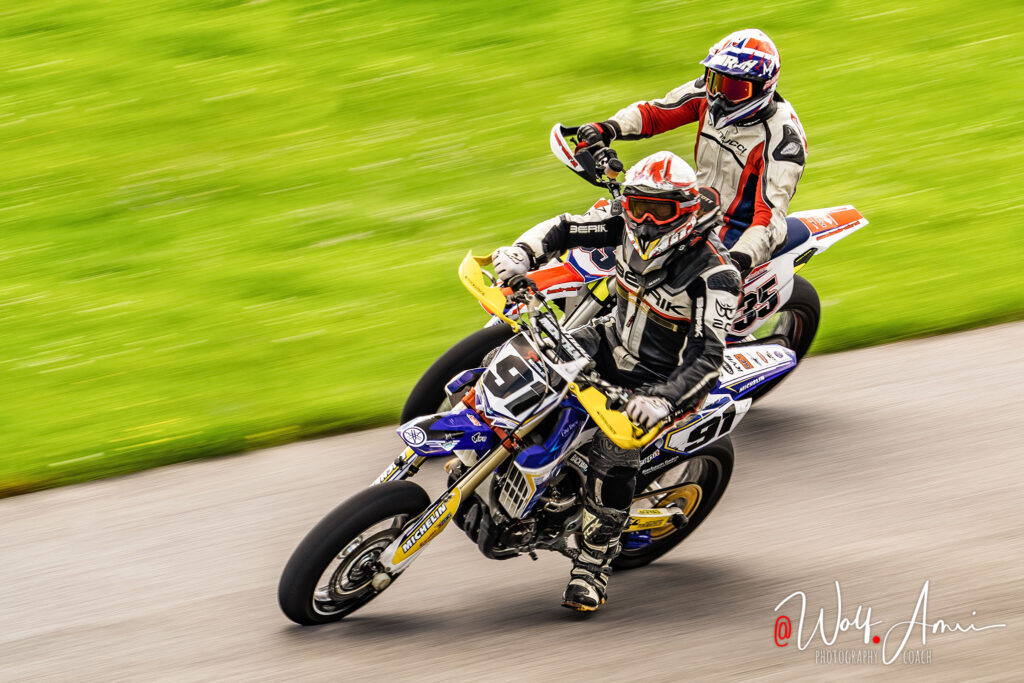
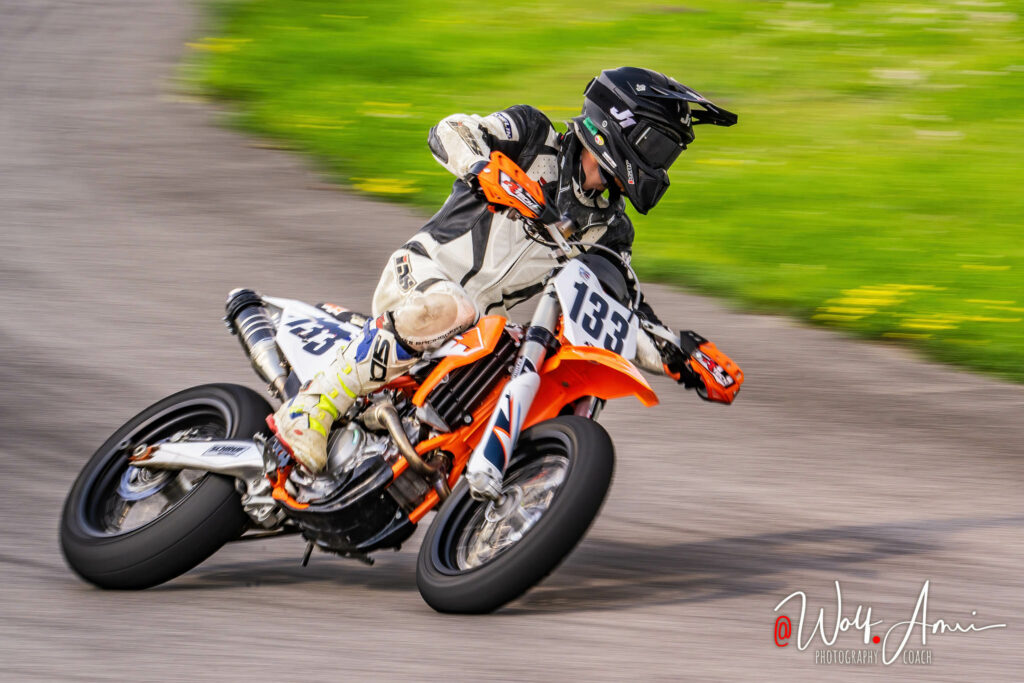
Framing in motorsports
As always in photography, framing is one of the keys to great shots. Leave more space in the direction your subject is moving than in the direction the driver is coming from. That looks way more dynamic.
Most exciting is to fill the frame as much as possible, but it is definitely easier to leave some space around and crop later.
Shoot many frames
Most motorsport photographers use burst mode (continuous shooting). Modern cameras will give you 10-30 frames per second – some even more. That will not only give you more images to choose from when it comes to shots in focus, but also in regard to framing and poses of the race cars / motorbikes.
The downside obviously is: image culling can become a pain. But if you are not doing this as a job, culling can also be enjoyable.
One is good, more is better
photographing a single driver is great, photographing several drivers competing against each other in a motorsport race is just awesome. Whenever you can, get multiple race cars or motorbikes into your shot. Place yourself so that you can overview one and possibly even more curves from a rather low perspective.
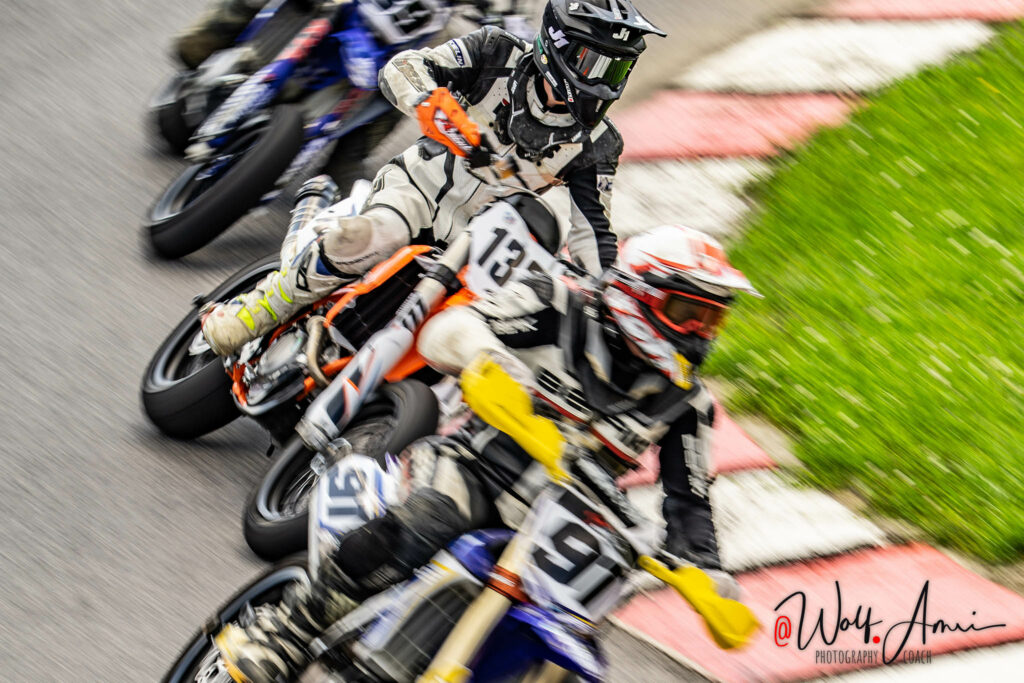
Blurring motion to show action
I’ve already mentioned it in the intro. You don’t want to freeze all the action. At least the tires should show some blur, otherwise the shot will lack some action.
Which shutter speed to use?
Depending on your skills and the speed of the particular motorsport, you can choose faster or slower shutter speeds. In curves, the driver logically drives slower than on long straights. Therefore you cannot give a definitive answer.
More spectacular are longer shutter speeds – I used 1/25sec for this image. The downside is that it might take quite a few shots until you get one that is usable. So it is easier to start with around 1/250sec, get one with motion blur only on the tyres and then lower the speed gradually and try to get more extreme shots.
As I said: you will get more usable shots with the faster speeds, but the excitement is bigger if you get one with really slow speed.
Tripod or no tripod for motorsport photography?
Usually you want to shoot hand held, but if you go really slow with your shutter speed, and you photograph the driver from the side on a straight, a tripod can help remove one axis of motion (namely up and down). On the shot above with 1/25sec, I used a very long focal length (600mm) and fixed every axis on the tripod except the pan axis. So all I had to do was frame the motorbike and pan with it. With that method I got many, many keepers.
Which aperture for motorsport photography?
Due to the rather long exposure times, you usually don’t have a big issue with getting enough light. So you don’t really need to use low aperture numbers to avoid high ISO levels and with it noise.
If you are like me and like to shoot wide open for the background blur and the separation of your subject, you can get that separation with long shutter speeds because the background will be motion blurred.
I have yet to try ND filters for motorsport photography in order to be able to use long exposure times and low f-numbers for a really special look. But I assume that this will lead to a dramatic slow-down of focus.
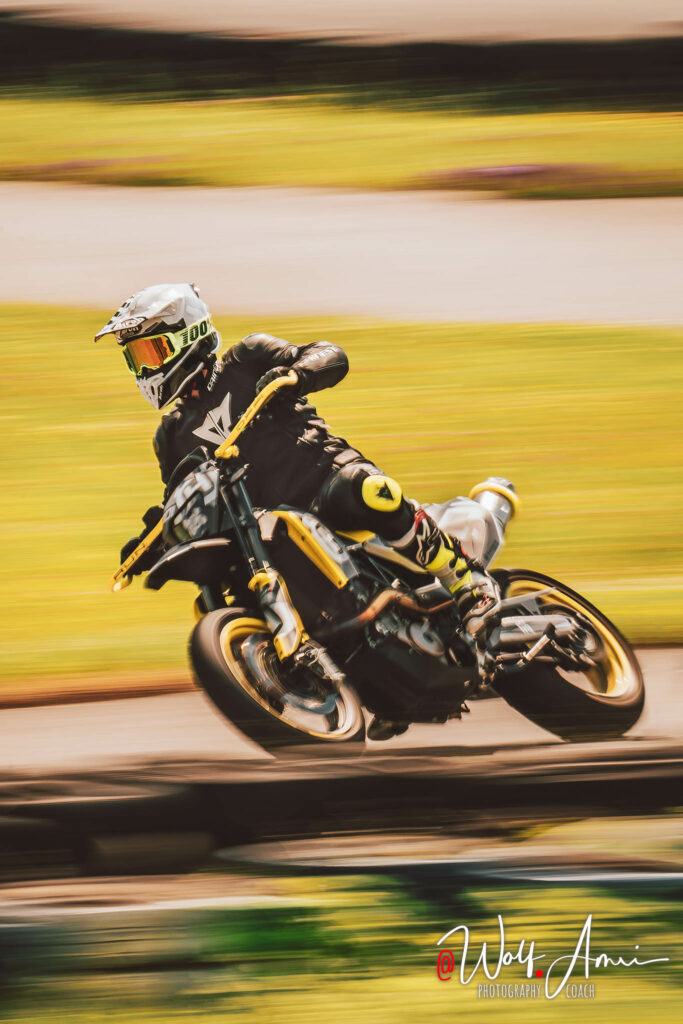
Which lens for motorsport photography?
That depends on how far you stand from the action and how big you want the vehicle in your frame. The further you are away, the longer the lens you will need.
The "industry standard"
If there is a standard, it is the 70-200mm f/2.8 from the respective manufacturer
You still have to get pretty close though to fill the frame with the vehicle.
This extremely popular sports lens usually has exceptionally fast focus and is tack sharp, even wide open.
Extreme telephoto lenses
Obviously, the further you are away, the longer the lens needs to be to get a real sports shot and not more of the scenery than the vehicle. Long lenses are much more difficult to frame. You can practice that though read more below in “practice framing”. If you don’t practice, you will get lots of shots with really bad framing – promised!
If you can get close - use wide angle lenses too
Wide angle shots are super amazing for motorsport photography, if you stand very close to the track – and I mean really close – like 1-2m from the driver. Framing is more a game of luck (and of course experience). You basically pan with the driver without even looking on the display or viewfinder.
The faster the shutter speed you use, the easier it is to get sharp images, particularly with wide angle shots, but longer ones can really be rewarding when only the head/face of the driver is sharp and the rest is weirdly blurred.
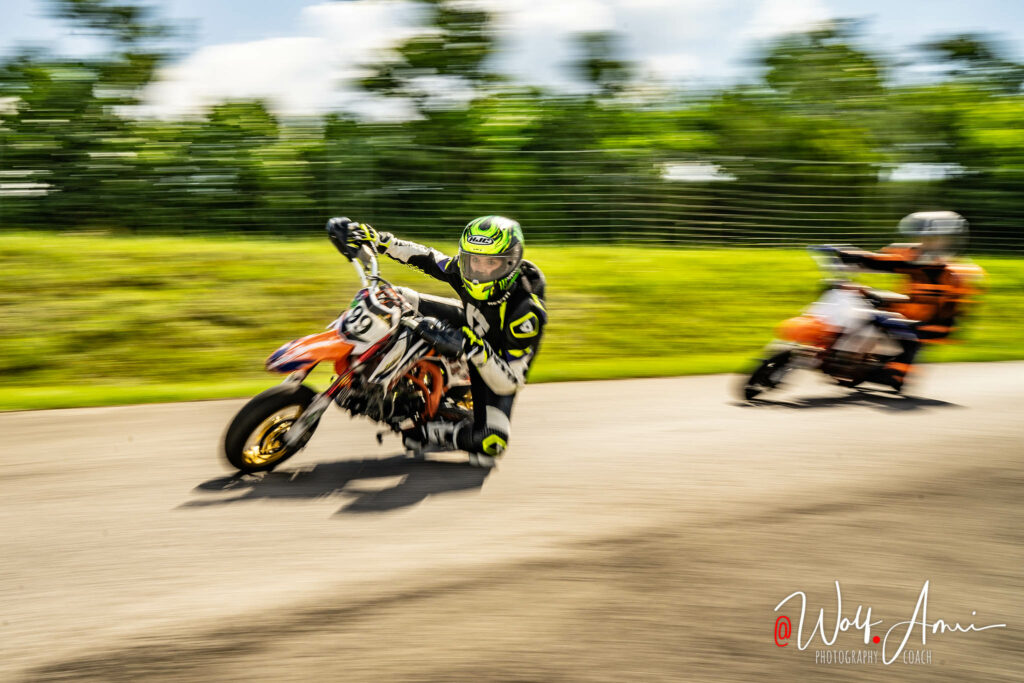
Lighting
Lighting is extraordinarily important in motorsport photography. Not only do badly lit images look rather boring, but maybe even more importantly: cameras need good light to focus fast. The lower the light level get, and the more you shoot against the light, the more difficult it will become to focus on the motorbike or race car.
Hard shadows, are not nearly as much of a problem as they are for example in portrait photography. But still the angle of the light does make a difference. Side lighting and even slight backlight (apart from slower focus) will give you great pictures. The only thing to avoid really is flat lighting from the front.
Flash can be used for staged shots (particularly popular with motocross), but are obviously not really doable for everything else.
Flash also is a bit of a different story in regard to shutter speeds and blur. I may write a separate blogpost about that – let me know in the comments if you are interested.
Practice framing
Motorsport photography requires exact framing. If you leave a bit more space around the subject, it is obviously a lot easier. But it’s still not something that is really easy. And if you want to fill the frame, you definitely need to practice before, particularly when using longer lenses.
Here are a few tips for framing practice:
- start with stationary subjects. Zoom in all the way on your lens and take it off of your eye.
Find a tree, standing car, person, etc. in the distance, take your camera to the eye and try to immediately frame it right in the middle without having to correct framing.
Do that many, many times. - Repeat the above with moving subjects. Cars on a highway are a great target. They move fast, but they only move in one direction, so it is rather easy to track them. Zoom out first and then try the same zoomed in.
If vehicles on a highway are too quick for the start, use slower roads.
If you don’t have no highways, get closer or zoom in even more. - Repeat with Flying birds. The masterclass of framing are flying birds. They move three dimensional and often have erratic flight patterns (like swallows). If you can frame swallows in flight, framing your shots for photographing motorsports will be a breeze.
Start zoomed out and then gradually zoom in. Framing swallows or other birds that grab their prey in flight with a 600mm lens is the absolute goal.
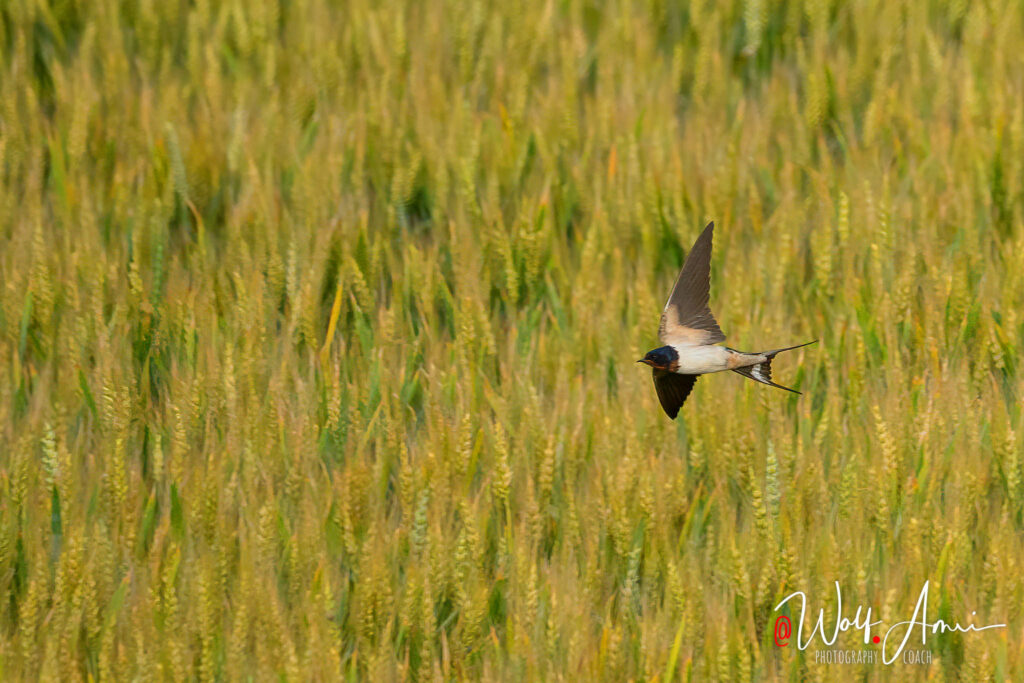
Don't get frustrated
Don’t think that every pro only gets great results. They are just clever enough to not show all they crap they have on their hard drive to the public. A professional will only publish those image that he feels are good enough.
And which ones do you think he will publish on his website? Correct – only the best of the best from many, many events. Why do you think you should get only those amazing shots from your first motosport event?

Editing
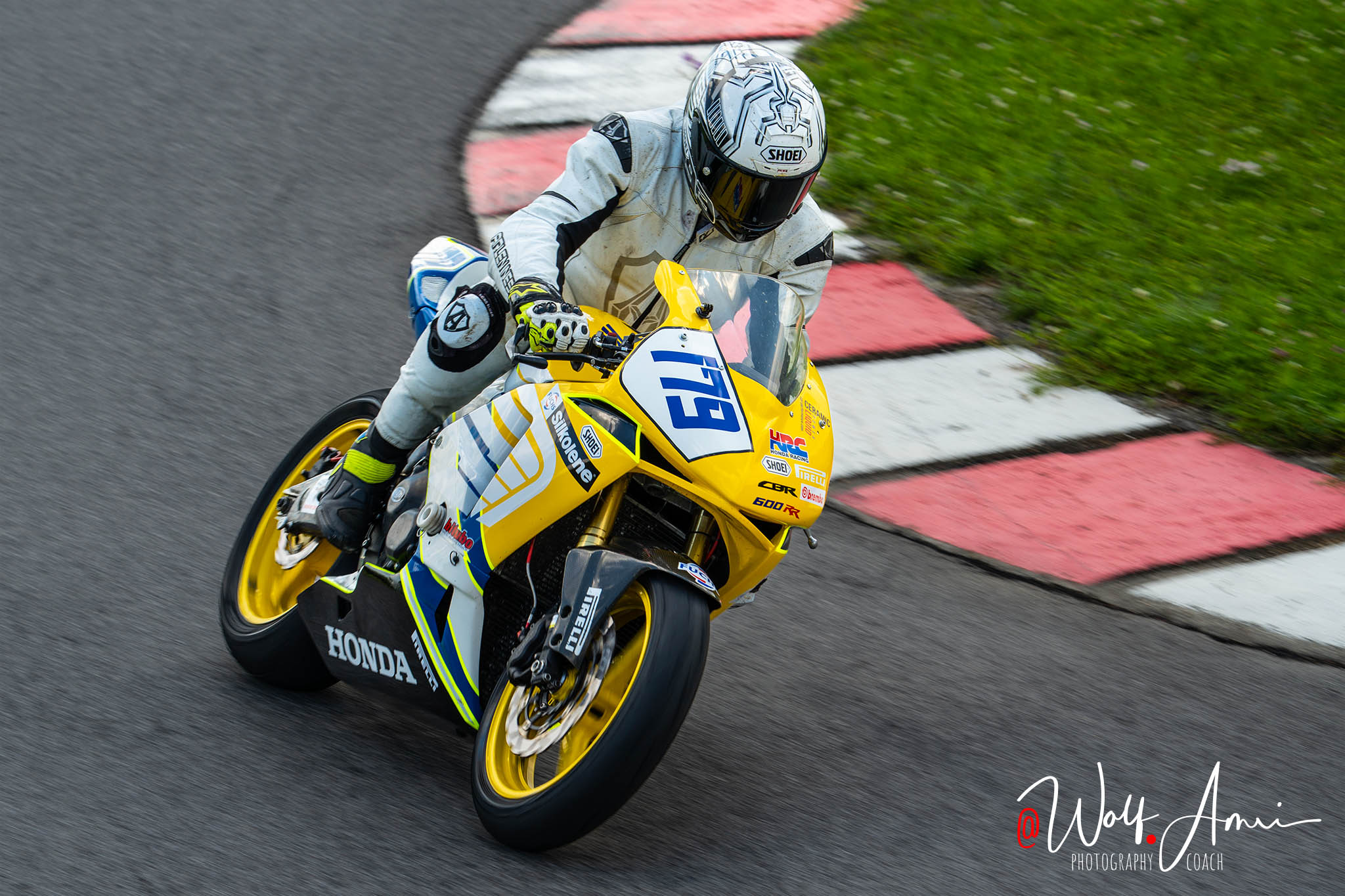

Topaz Sharpen AI
An amazing tool for shots that are great, but just lack that last bit of sharpness is Topaz Sharpen AI. It has several modes, including a mode that sharpens motion blur.
On the way it also reduces excessive noise – have a close look at this example without sharpening and with sharpening/noise removal.
I have a discount code for you that saves you some money in case you want to purchase the software. Check out topazlabs.com and use the discount code wolfamri at checkout to save you 15%.
But before you buy, give their trial version a shot. I swear you’ll love it!
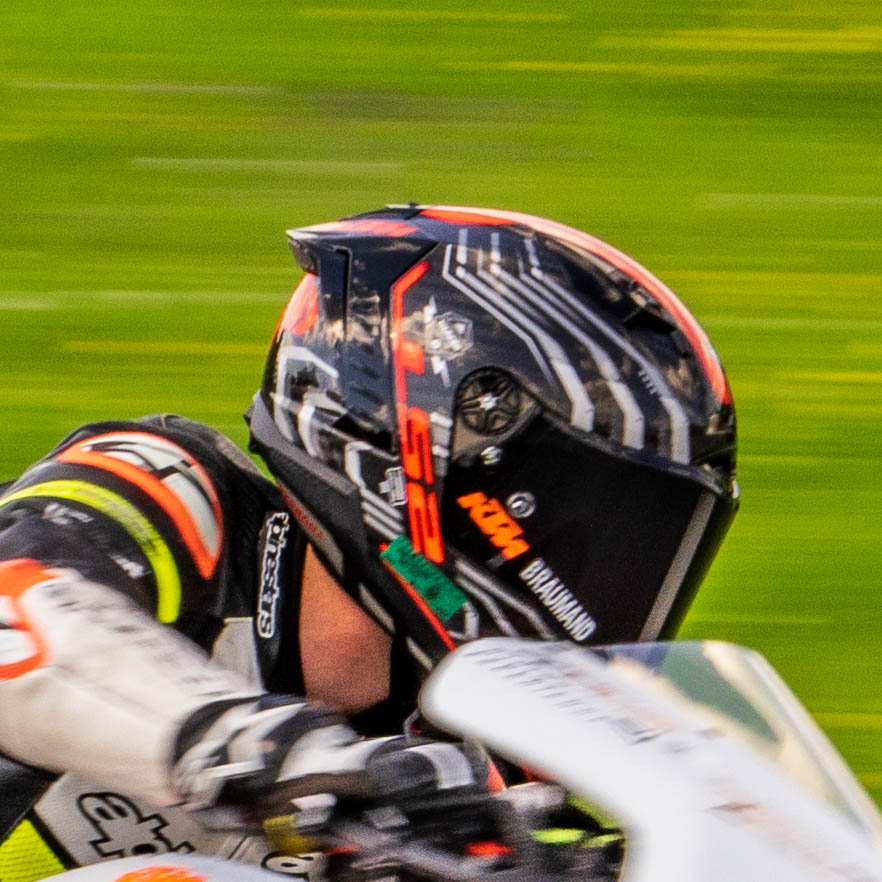
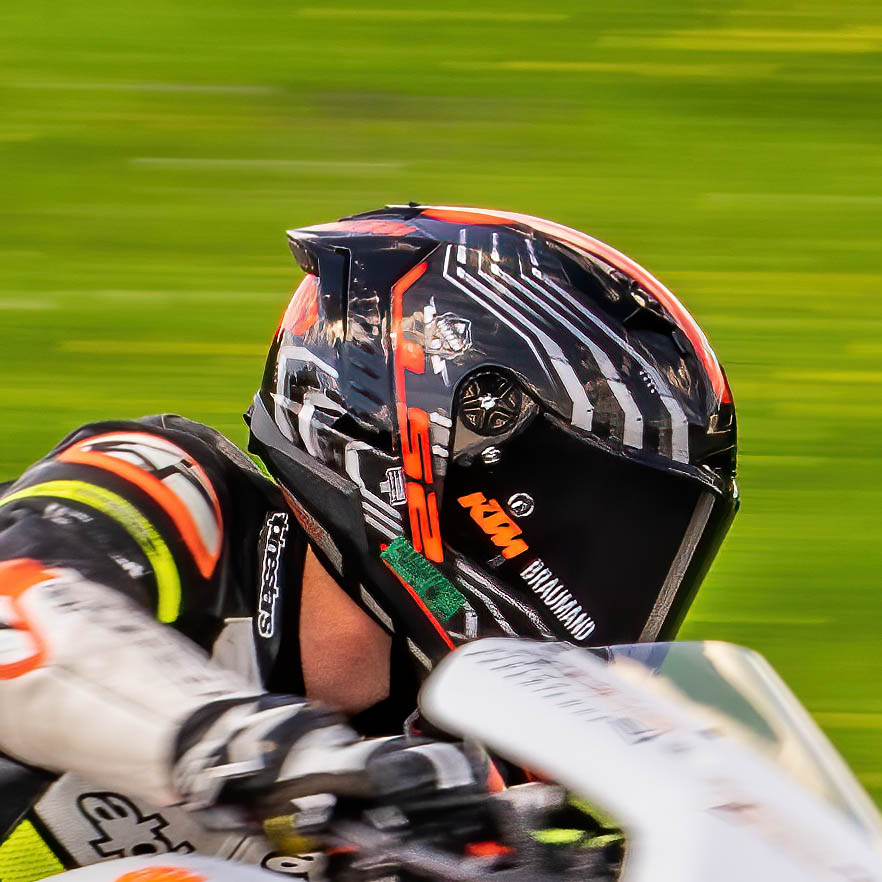
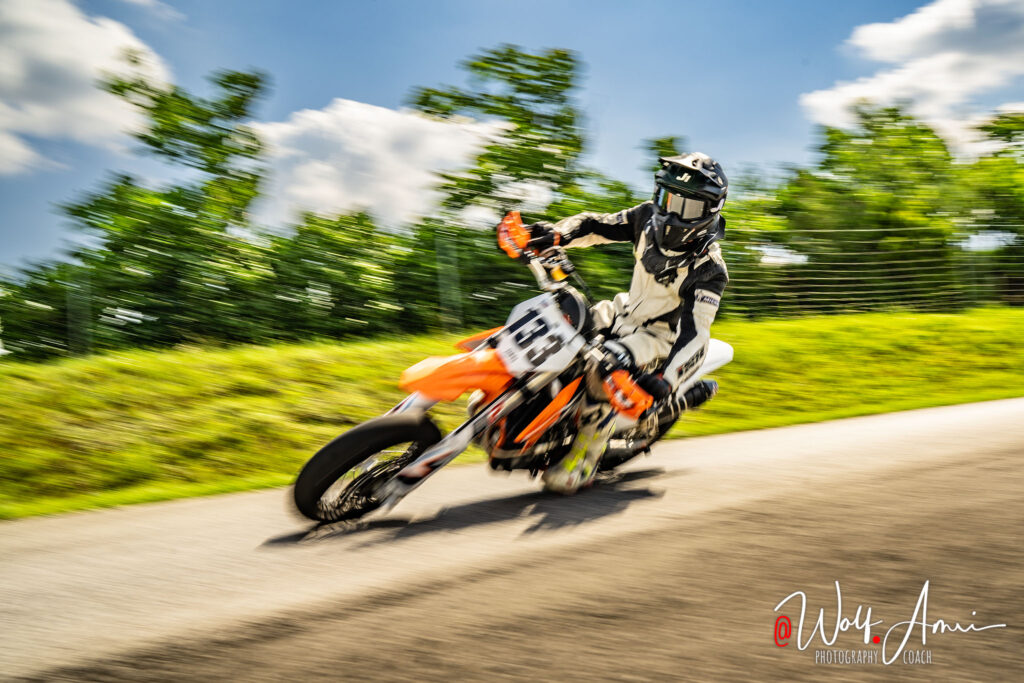
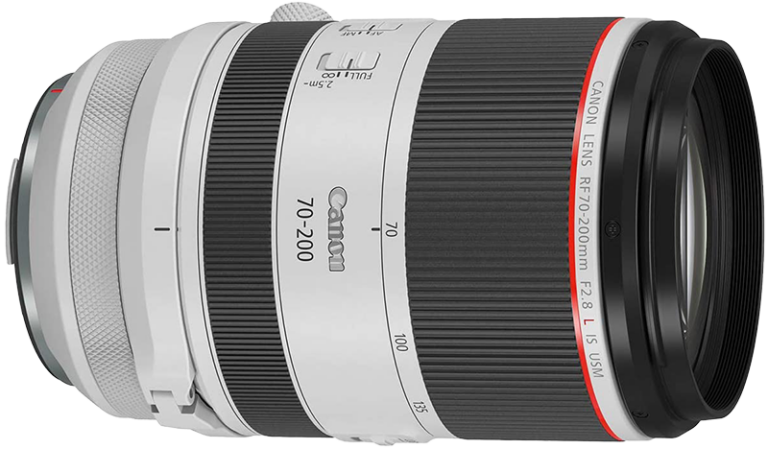
A great tutorial indeed, I have gone through the whole text and understood that how to use slow shutter speed in getting motion blur , and in fact the images are much superior in comparison to fast shutter speed. We need such tutorials in long exposure photography and also use of ND filter . Thank You
Thank you for your feedback, Dinesh. Much appreciated. Great idea, I’ll work on those tutorials 😉. Did you see my general info on ND filters yet?